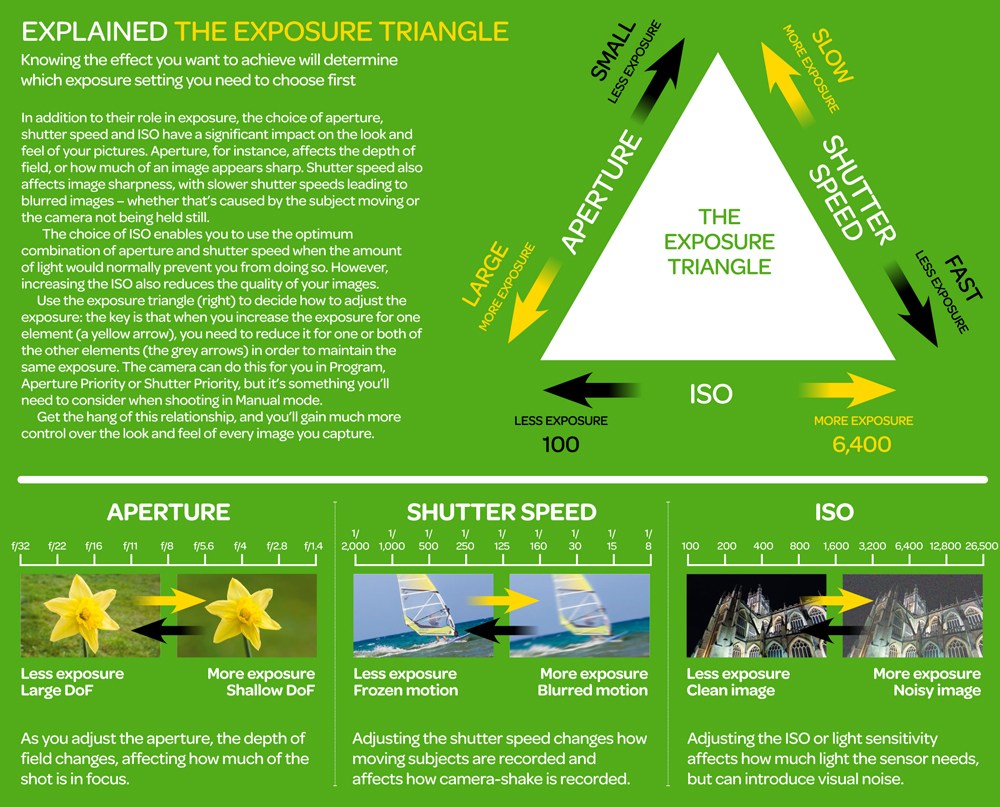- BY tictac
- POSTED IN Basic Elements of Photography
- WITH 0 COMMENTS
- PERMALINK
- STANDARD POST TYPE

To improve your photography, you need to get the basics right. The basics of exposure triangle parameters consists of aperture, shutter speed and ISO
Let’s understand what it is.
Aperture: Aperture is the size of the lens opening. It is the circular opening in the lens which is responsible for how much volume of light should enter the camera. It is expressed as f/4, f/5.6 or f/8 f/16 etc. F stands for the focal length of the lens. F also stands for f-number.
Aperture is one of the parameters which is responsible for depth of field. Depth of field is that area of photograph which is in sharp focus. The other 2 parameters responsible for depth of field are focal length and camera to subject distance.
Shutter Speed: Shutter speed has important role to play in terms of exposure, sharpness and creativity. Shutter speed in simple terms is the duration of time the shutter is open for the light to enter and strike the imaging sensor. It is expressed in seconds such as 1/15, 1/30 or 1/500 etc. This is one of the parameters which controls how much light should enter the camera.
Shutter speed is responsible for freezing the action or creating motion blur in the image.
ISO simply stands for the International Organization of Standardization, which is the main governing body that standardizes sensitivity ratings for camera sensors. The term was carried over from film, when the ISO rating was known as the “film speed” and “ASA.”
In simple terms, it is the sensitivity of the sensor to light. Slower ISO takes more time to reach and higher ISO takes less time to react to light.
The lower the number (ISO 100), the less sensitive, the higher the number (ISO 3200) the more sensitive. A higher ISO allows you to shoot in low light conditions. ISO is also responsible for noise / grains in your image. Higher the ISO, more grains and the quality of the image may go down. The level of acceptable noise in an image is purely dependent on the camera model.
As a photographer, you need to understand these basic concepts of photography.
Let us put these to practical use based on the genre of photography:
1. Landscape : That’s a static scene. Take your time and think more from aperture point of view and decide how much of the image has to be in good focus and use the aperture value accordingly. Don’t worry too much about shutter speed unless there is movement happening in the landscape (water flowing, people walking, cars moving etc). Tripod definitely recommended here.
2. Wildlife : Depending on the subject being still or moving, you may have to think more about what shutter speed to use to freeze the subject or create motion blur (panning). Aperture also plays a role of how much of the subject you want in focus.
3. Macro / Close-up : If it’s a static subject, it does not matter if you shoot that at 1/10 or 1/1000 shutter speed. So you need to think more from aperture point of view. Decide what kind of DOF you need based on lens and subject distance. Tripod definitely recommended.
4. Candid Shots : Depending on subject moving or static, you need to think about what aperture / speed to use.
5. Events : When you are shooting events like stage plays, or low light photography, you need to watch out for shutter speed. You may have to increase the ISO to get a faster shutter speed.
6. Sports : You need to work on your shutter speed for this genre of photography.
To summarise:
If there is movement in the scene – think more from a shutter speed point of view (giving emphasis to aperture as well for proper DOF)
If the subject is totally static like macro / product / monuments / landscape / portrait shots etc – You need to think more from aperture point of view to get the desired DOF.
For very low light photography and if there is movement happening in the scene, you may have to think about the combination of ISO and shutter speed.

